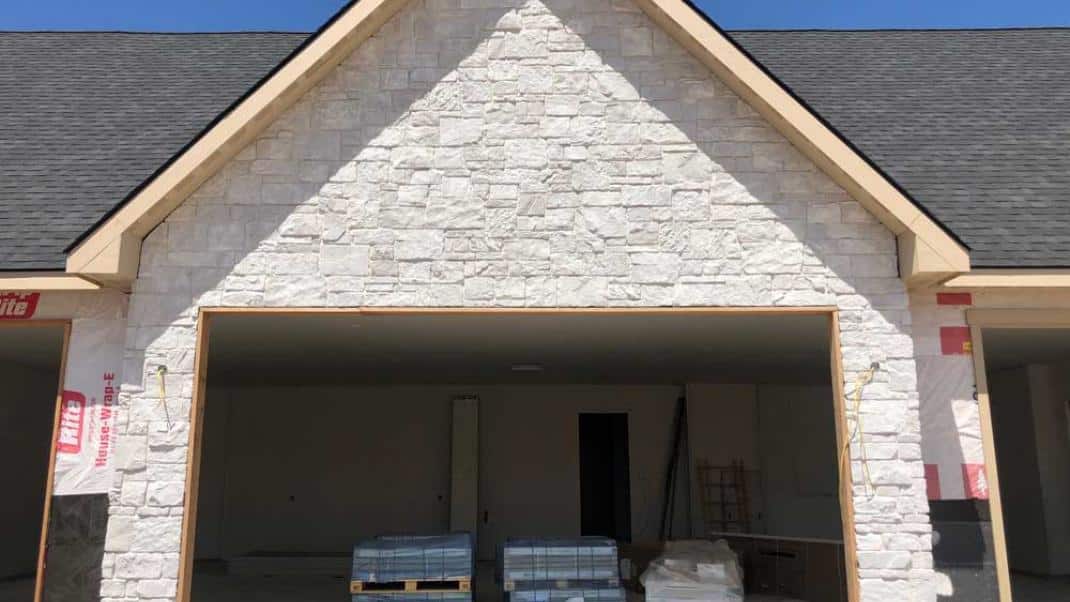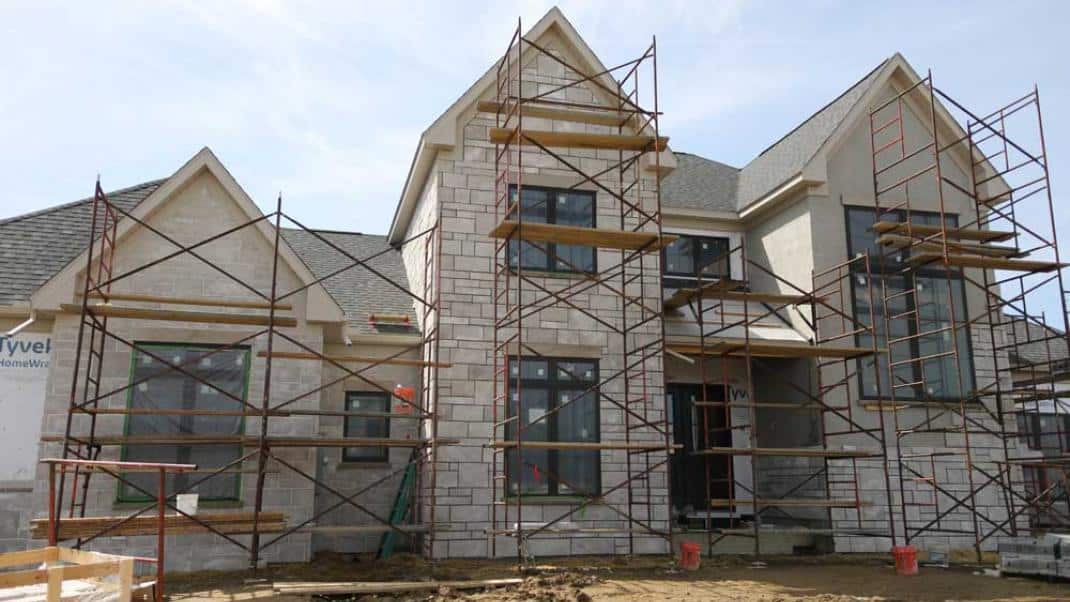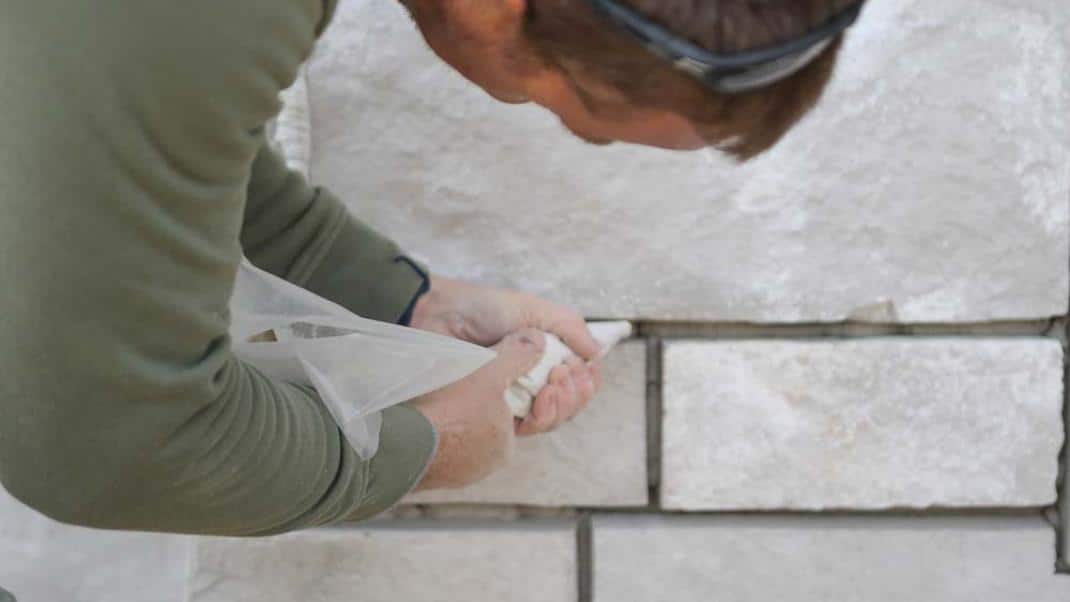Manufactured Stone Veneer Installation Guide For Professionals

Working with manufactured stone veneer is a great way to offer your clients and customers the latest home design trends. As a professional stone product distributor, mason or general contractor, you likely have lots of experience with stone installation projects of various types. Casa di Sassi respects the expertise of the stone professionals who choose our products to elevate their new builds and remodel endeavors.
And you can feel good about offering your customers a top-quality product with the added value of a 50-year warranty they can count on for the long haul.
You don’t need us to explain the step-by-step process of how to install stone veneer — but we have gleaned insights over the years that can help make a veneer stone installation go more smoothly.
Check out our tips on everything from explaining why professional installation matters to knowing where manufactured stone veneer shouldn’t be installed to using simple everyday objects to up your grout game.
BENEFITS OF PROFESSIONAL INSTALLATION
Like us here at Casa di Sassi, you want your customers to buy manufactured stone veneer without regret. That means making sure they understand many of the pros and cons of manufactured stone, including how its cost compares to other faux finish products and how long it might take to order supplies.
Another way to deliver excellent customer service is to explain the benefits of professional installation for stone veneer projects. A quick breakdown of those benefits includes:
- Lower risk of damage to property
- Higher odds of a flawless project
- Expert advice on details like stone wall caps or fireplace mantels
- Less mess
- Easier accommodation of unforeseen problems
Once you have that conversation, most homeowners will get onboard with hiring experienced stone professionals to install their chosen veneer.
MANUFACTURED STONE VENEER INSTALLATION GUIDE
For the most complete veneer stone installation instructions, check out the National Concrete Masonry Association (NCMA). They’ve endorsed manufactured stone veneer as a versatile, durable and cost-effective solution for adding texture and visual interest to indoor and outdoor spaces.
Here are our fave tips for a smooth, stress-free and professional installation every time.
FOR ALL STONE INSTALLATION PROJECTS
Indoors or out, sweeping scope or small impact, every professional installation involves an array of challenges. Keep these in mind no matter how big or small your manufactured stone veneer project is.
Work top to bottom
No matter the size of the project, from a kitchen backsplash to a home’s entire façade, installing manufactured stone veneer from the top down helps minimize messy grout droppings on both stones that have been set and the project’s surroundings.
Never use stone veneer as a structural or weight-bearing element
Manufactured stone veneer is not a weight-bearing material. It is a decorative product that must be laid over top of a structural material, but stone installation on a variety of substrates is possible, including open wood frame construction. Even for retaining wall applications, though, there must be an existing structure before stone veneer can be applied.
Wait to wipe up wet mortar
If you try to wipe off wet mortar that has fallen on stone veneer right away, it will leave a stain. Instead, let it dry and whisk it away with a dry brush or cloth.

FOR EXTERIOR PROJECTS
Renovating outdoor spaces with stone veneer makes good sense. Not only do Casa di Sassi profiles mimic the look of natural materials found on centuries-old buildings, but our products are remarkably durable — when they’re installed properly. Our tips here are all “don’ts” because many DIYers have regretted making these mistakes.
Don’t skimp on waterproofing
From selecting the appropriate substrate to making sure the fasteners you use are corrosion resistant to following best practices for water-resistant barriers (WRBs), this part of the process is crucial for long-lasting durability. If you cheap out on waterproofing, the manufactured stone veneer can crack or completely fall off — and moisture can get inside the home’s walls, leading to a host of problems. Double check water management at the flashing, overhang of capping materials and soft joints between dissimilar materials.
Don’t install in extreme weather
Avoid stone installations in temps that dip below 40° F or rise above 90° F. When it’s too cold, the mortar won’t set right, and antifreeze admixtures in mortar are not recommended for use with manufactured stone veneer. In very hot weather, mortar can dry out and may require frequent misting to remain workable.
Do not install manufactured stone veneer in exterior locations that are:
- In frequent or direct contact with water, including from yard sprinklers, downspouts, pools or whirlpools
- Subjected to frequent contact with harsh chemicals like deicers or pool cleaning agents
- At risk of impact from kicking or exposure to de-icing chemicals, as on stair risers
- In direct contact with flames, as in the firebox of a wood or gas fireplace
FOR INTERIOR PROJECTS
Interior design stone veneer projects have lower risks for catastrophic problems, but they still require careful planning and thoughtful design. These are the projects where Casa di Sassi really shines! You can make a homeowner’s aspirational design ideas a reality with your professional installation in nearly any room of the house.
Skip the waterproofing – sometimes
Waterproofing is not generally necessary for interior applications that are not in contact with water, like a foyer accent wall or fireplace enclosure. However, applications that will be exposed to water, like a kitchen backsplash or bathtub surround, must be treated as if they were outdoor projects with appropriate water resistant barriers.
Take care of the corners
Use a miter saw to cut a precise 45-degree angle into the edge of stone veneer corner pieces. This will help achieve a seamless consistency that looks elegant and finished, which is what homeowners expect from professional installation.

FOR STONE VENEER GROUTING
Grouting is the final step in the veneer stone installation process — and some would argue the most important. It’s definitely the part that requires the steadiest hand and your most experienced artisan. Explaining why to grout stone veneer projects can help your clients see how this step adds the finishing touch to any professional installation. Try these tips to streamline the grouting process and achieve perfect grout lines that last.
Fill front to back
If you fill grout lines only at the front, you might inadvertently leave a hollow spot in the back. This will eventually lead to the grout falling out, leaving an empty grout line that makes the project look cheap. Press the tip of your grout bag deep into the joint line to make sure you’re filling the entire void.
Opt for plastic grout bag tips over metal
You can customize the opening of a plastic tip by cutting it to your desired diameter of grout flow. In general, a 5/8-inch opening is sufficient, so long as your grout mixture is loose enough to ooze out on its own without squeezing the bag.
Rinse the grout bag
As you refill your grout bag, sand can build up around the tip and inhibit the flow. Avoid this headache by pausing after every third grout fill-up to fill the bag with water and rub it back and forth as the water exits. This should get rid of the caked-on grit.
Skip the fancy pintucking tool
Once the grout has set to firmness but isn’t hard, it’s time to pintuck the grout lines for an even, consistent look. If you’ve got a carpenter’s pencil in your toolbox, you don’t need a specialized pintucking tool! Rake the unsharpened end of the pencil along the grout lines. It’s just the right size and shape to remove excess material and achieve a flawlessly smooth finish.
Be judicious about unfilled joints
The non-grouted look of Casa di Sassi’s EZ Ledge, Kwik Stack and Ledgestone profiles is timelessly stylish — but it’s not always the best choice. The NCMA recommends against the dry-stack effect in settings where children might be tempted to exploit the unfilled joints as climbing aids, as in schools or other public places. Alerting homeowners with young kids or project managers of public-facing installations to this potential hazard elevates your standing as an insightful stone professional.
INSTALLING CASA DI SASSI STONE
Interested in offering your clients and customers the elegance, versatility and long-term value of top-quality manufactured stone veneer? Become a Casa di Sassi distributor and join us in elevating the industry with our American-made stone veneer products and your professional installation skills.

As we look to the future, we continually seek to innovate and grow. From pushing the limits on our creativity to developing new stone profile designs – to increasing the efficiency of our manufacturing processes – our team is dedicated to being a valuable stone veneer partner.
Recent Articles
The Environmental Impact of Natural Stone Alternatives
Over the past several years, homeowners have been thinking more and more about sustainability, and the trend isn’t slowing down. In a 2024 report, 45% of realtors said their clients showed interest in sustainability. But sustainability isn’t always straightforward,...
Simplify Stone Veneer Inventory & Delivery with Casa di Sassi
Casa di Sassi has been partnering with the best stone veneer distributors across the country since 2005. Over the years, we’ve become intimately familiar with the inventory and fulfillment issues that keep distributors up at night. Problems like overstocking, shipping...
Stone Veneer for Luxurious Home Theaters
A home theater is a fantastic luxury option for adding a different flavor of relaxation to your house. But what if you want something a little different from the typical home theater? That’s where stone veneer tiles for home theater can be useful. Using stone veneer...
